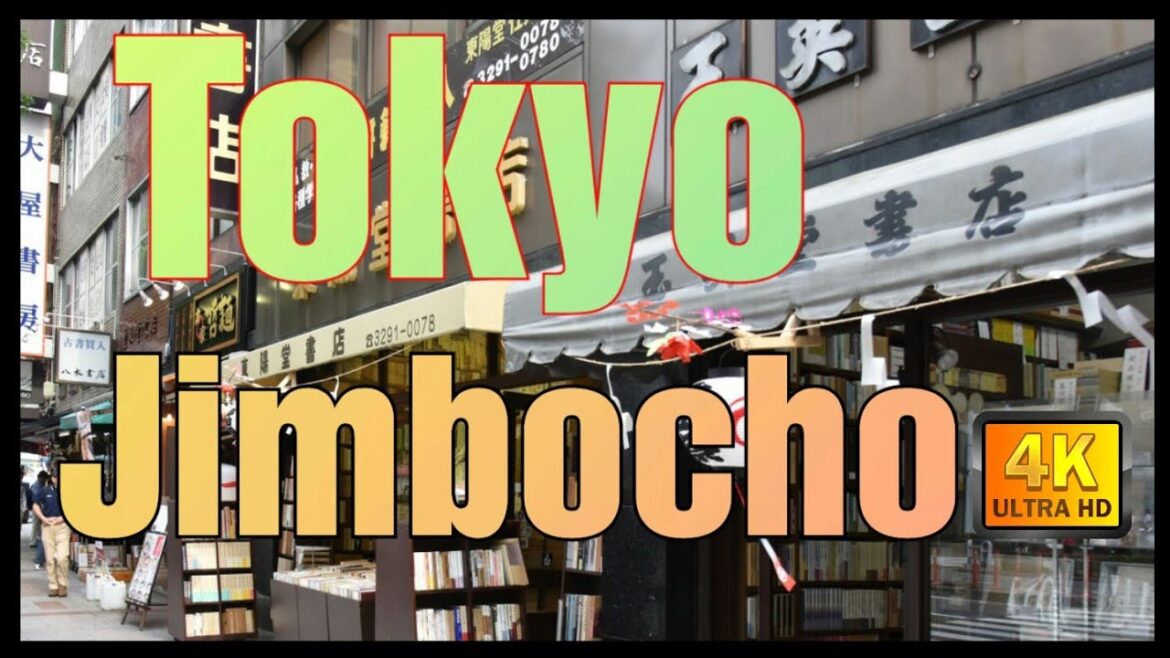【4K】Japan Walk – Tokyo ,Chiyoda (千代田区,) December 2020,#Japan #Tokyo #Jinbōchō (神田神保町) rainy day,
【4K】Japan Walk – Tokyo ,Chiyoda (千代田区,) December 2020,#Japan #Tokyo #Jinbōchō (神田神保町) rainy day
Chiyoda (千代田区, Chiyoda-ku) is a special ward located in central Tokyo, Japan. It is known as Chiyoda City in English.[1]
It was formed in 1947 as a merger of Kanda and Kōjimachi wards following Tokyo City’s transformation into Tokyo Metropolis. The modern Chiyoda ward exhibits contrasting Shitamachi and Yamanote geographical and cultural division. The Kanda area is in the core of Shitamachi,[2] the original commercial center of Edo-Tokyo. On the other hand, the western part of the Kōjimachi area typically represents a Yamanote district.
Chiyoda consists of the Imperial Palace and a surrounding radius of about a kilometer. As of June 2020, the ward has an estimated population of 66,575, and a population density of 5,709 people per km², making it by far the least populated of the special wards. The total area is 11.66 km², of which the Imperial Palace, Hibiya Park, National Museum of Modern Art, and Yasukuni Shrine take up approximately 2.6 km², or 22% of the total area.
https://en.wikipedia.org/wiki/Chiyoda,_Tokyo
Chiyoda is an economical powerhouse, the small area East of the palace in the districts of Otemachi, Marunouchi and Yurakucho (colloquially “Daimaruyu”) houses the headquarters of 19 Fortune 500 companies, is the source of roughly 10% of the combined revenue of all Japanese companies[3] and produced in 2017 the equivalent of around 1/4th of the GDP of the country.[4] With a day population of around 850,000, its day/night population ratio is by very far the highest of all municipalities in Japan.
Chiyoda is also the political center of the country,[5] Chiyoda, literally meaning “field of a thousand generations”, inherited the name from the Chiyoda Castle (the other name for Edo Castle, today’s Imperial Palace). With the seat of the Emperor in the Imperial Palace at the ward’s center, many government institutions, such as the National Diet, the Prime Minister’s Official Residence, the Supreme Court, ministries, and agencies are also located in Chiyoda, as are Tokyo landmarks such as Tokyo Station, Yasukuni Shrine and the Budokan. The neighborhood Akihabara is also located in Chiyoda, as are twenty embassies and consulates.
Tokyo is a city full of neighborhoods iconic for different things: Harajuku for its influence in fashion and pop culture or Akihabara for its wealth of electronics and anime. When it comes to all things literary, however, no district is greater than Jimbocho, Tokyo’s Book Town.
Jimbocho is home to anywhere between 160 and 200 bookstores, depending on who you ask. While there are many new and chain stores, the majority of booksellers in the area specialize in pre-loved and antique books. The neighborhood is, too, home to the Literature Preservation Society and the Tokyo Bookbinding Club, as well as a number of universities, publishing houses and libraries, making it outstandingly the place to go in Tokyo for a bookish day out.
History
Naturally, an area known for its antique and second-hand books has quite a story to tell in terms of its history. Named after Nagaharu Jimbo, a Samurai from the 17th Century, the neighborhood and many of its bookstores were burned down in the great fire of 1913. In answer to the tragedy, university professor, Iwanami Shigeo, opened up a bookstore which has since grown into Iwanami Shoten.
Since then, the neighborhood has flourished into a popular area for the bookish and intellectual, with hordes of bookstores and cafes popping up to suit the growing popularity of the area. With Nihon, Senshu, Meiji and Hosei Universities all located within close proximity to the main shopping strip, it’s no wonder Jimbocho has grown into a bookish wonderland.
How to get there
Like many of Tokyo’s popular shopping districts, Jimbocho is remarkably easy to travel to. While there are a number of surrounding stations and bus stops available, the best station to access the district from is, undoubtedly, Jimbocho station. Just eleven minutes on the train from Shinjuku, Jimbocho station comes out onto Yasukuni-Dori, right in the heart of the book district.
The majority of the neighborhood’s bookshops are located just south of the station, along Yasukuni-Dori and the streets that run parallel to it. Given that the station is located right in the center, this means that the district’s booksellers are all located a short walk from each other. Jimbocho station is accessible from the Mita, Shinjuku, and Hanzomon lines.


9 Comments
Cool
Its busy out there now. A love walking when a lot of people walking around. It gives me more excitement to continue to walk. Big 👍
Another interesting tour, looks busy streets 👍 j🎥
The amusement park at Tokyo Dome has changed from 25 years ago. That will change.
I also posted a video of walking in Japan, so if you like, click the cat icon.
Perfect 💕❤👍
Great video walking thank you for sharing
I'm from Vietnam. I love cherry blossom, kimono, samurai, katana… I love all of Japan.
Jimbocho Book Town – a must visit next time we are in Tokyo! Thank you for the tour.
Wow amazing ! Very beautiful walk !
It's always a pleasure to discover new place with you!
Thanks for sharing !
どうもありがとうございます !
Merci 😁